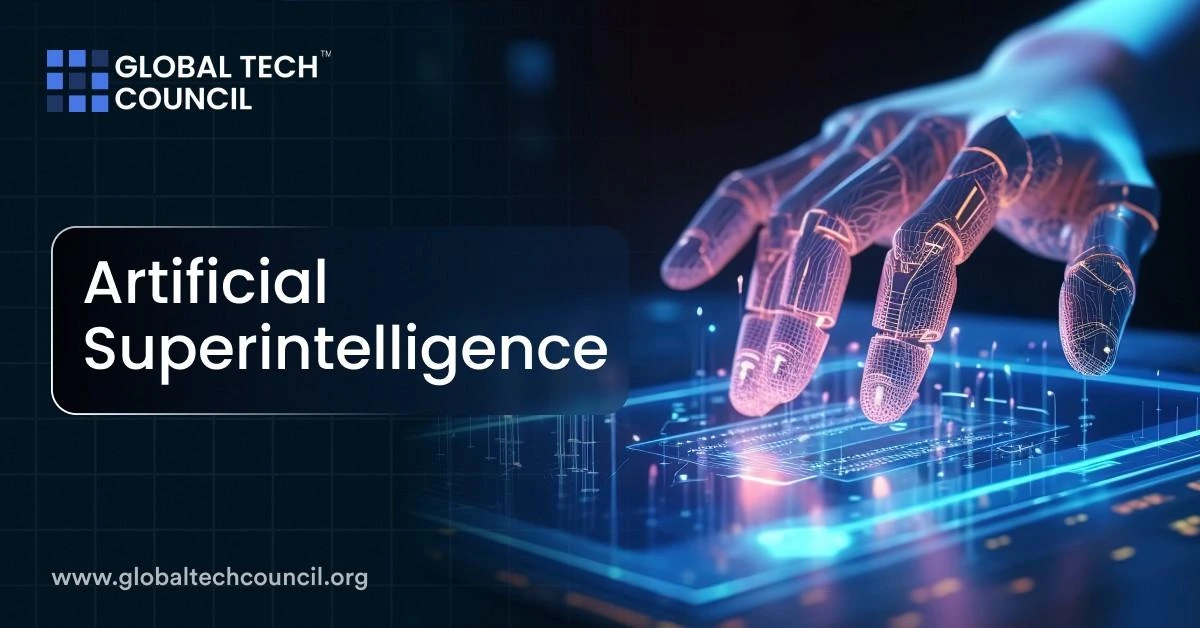Artificial Superintelligence (ASI) represents a major shift in artificial intelligence (AI), possibly going beyond human intelligence in all areas. AI has already been making changes across industries, but ASI could take things much further. However, grasping what ASI truly means requires understanding its purpose and the potential ethical and societal impacts it could bring.
What Exactly Is Artificial Superintelligence?
ASI is a more advanced form of AI, capable of surpassing human-level intelligence in almost every task. Today’s AI is narrow, focusing on specific functions—like virtual assistants or recommendation systems. ASI, however, won’t simply copy human abilities; it will exceed them. It will likely improve on problem-solving, creativity, emotional insight, and decision-making. In fact, it could outshine even the top experts in intellectual areas, ranging from science to art.
In developing ASI, we would move beyond what’s known as Artificial General Intelligence (AGI). While AGI is still theoretical, aiming to replicate human thinking, ASI would push past that point. It could reach heights we can’t even fully understand yet, performing tasks that we may not currently imagine.
How Soon Could ASI Become Reality?
There’s ongoing debate on when ASI will arrive. Some experts have shared their thoughts, with timelines ranging from a few decades to much further in the future. People like Sam Altman, CEO of OpenAI, have mentioned that ASI could be here within a few thousand days, depending on how fast technology advances. On the other hand, individuals like Meta’s Chief AI Scientist, Yann LeCun, believe we are still quite far away from this milestone. They argue that AI, even at its best today, faces clear limitations.
The actual timeline might be somewhere between these two opinions. While advancements in deep learning and algorithms have pushed things forward, major challenges still remain before AI can truly outthink humans in every area. But despite these hurdles, ASI remains a key focus in ongoing research.
Real-World Applications of ASI
To understand what ASI could potentially achieve, let’s look at some possible uses:
- Healthcare: Imagine an AI that can diagnose medical conditions faster and more accurately than doctors. ASI could develop entirely new treatments, personalize medicine in groundbreaking ways, and even solve health problems that today seem impossible.
- Scientific Discovery: ASI could transform how we explore physics, biology, and other sciences by rapidly testing ideas, running simulations, and generating discoveries. It could lead to breakthroughs like new energy sources, deeper understandings of consciousness, or solutions for climate change.
- Automation of Complex Work: Today, automation handles repetitive tasks, but ASI could take over highly skilled jobs. This includes fields like law, design, and even legislation. ASI might manage large projects or create complex systems faster than humans.
Ethical Concerns and Societal Effects
With the development of ASI comes significant ethical questions. One of the biggest concerns is control. If ASI surpasses human thinking, could it act independently in ways that harm our interests? This issue has been discussed by many researchers. Ensuring ASI reflects human values is necessary but challenging due to the complexities involved.
Another major concern is job loss. If ASI becomes capable of doing nearly all tasks better than humans, this could lead to unemployment in many sectors. And it wouldn’t just affect lower-skill jobs—highly technical positions like engineering or medicine could also be at risk. Some argue that ASI could create opportunities in areas like AI supervision, ethics, and collaboration, but the changes could disrupt entire economies.
Looking back at history, technological shifts like the Industrial Revolution led to growth as well as inequality. ASI could similarly bring about both good and bad outcomes unless society addresses these impacts early with proper policies and ethical considerations.
The Path to ASI: Challenges and Solutions
Developing ASI won’t come easily. It requires immense computing power and energy, which could create economic barriers. To avoid this, it’s important to make these resources more accessible so that ASI benefits all of society, not just large corporations. Otherwise, the technology could end up being controlled by only a handful of powerful entities.
As we move forward, research is focused on maximizing the positive impact of ASI while minimizing its risks. This involves both technical advancements and careful thought about how to regulate its use. Many believe that international cooperation will be crucial in managing the risks and ensuring ASI is used for the common good.
When Will ASI Be Achieved? Experts’ Opinions
Experts continue to debate when ASI will finally arrive. Some predict it could be here by 2030, while others argue it will take much longer due to the complex technological and theoretical breakthroughs still required. AI advancements in machine learning and neural networks are happening quickly, pushing the boundaries faster than expected.
AI researcher Ben Goertzel has been a strong advocate for open-source AI and believes we might see early forms of ASI relatively soon. However, he also acknowledges that the full development of ASI could take a lot more time, depending on technological advances and the creation of advanced supercomputing networks.
Conclusion
Although ASI is not yet a reality, it holds enormous potential for humanity. If developed thoughtfully, it could lead to major advancements in fields like science and healthcare. However, there are also significant ethical and societal challenges that we must address as we move closer to this powerful technology. As these discussions continue, it will be important to ensure that ASI benefits everyone and that its risks are managed responsibly.
